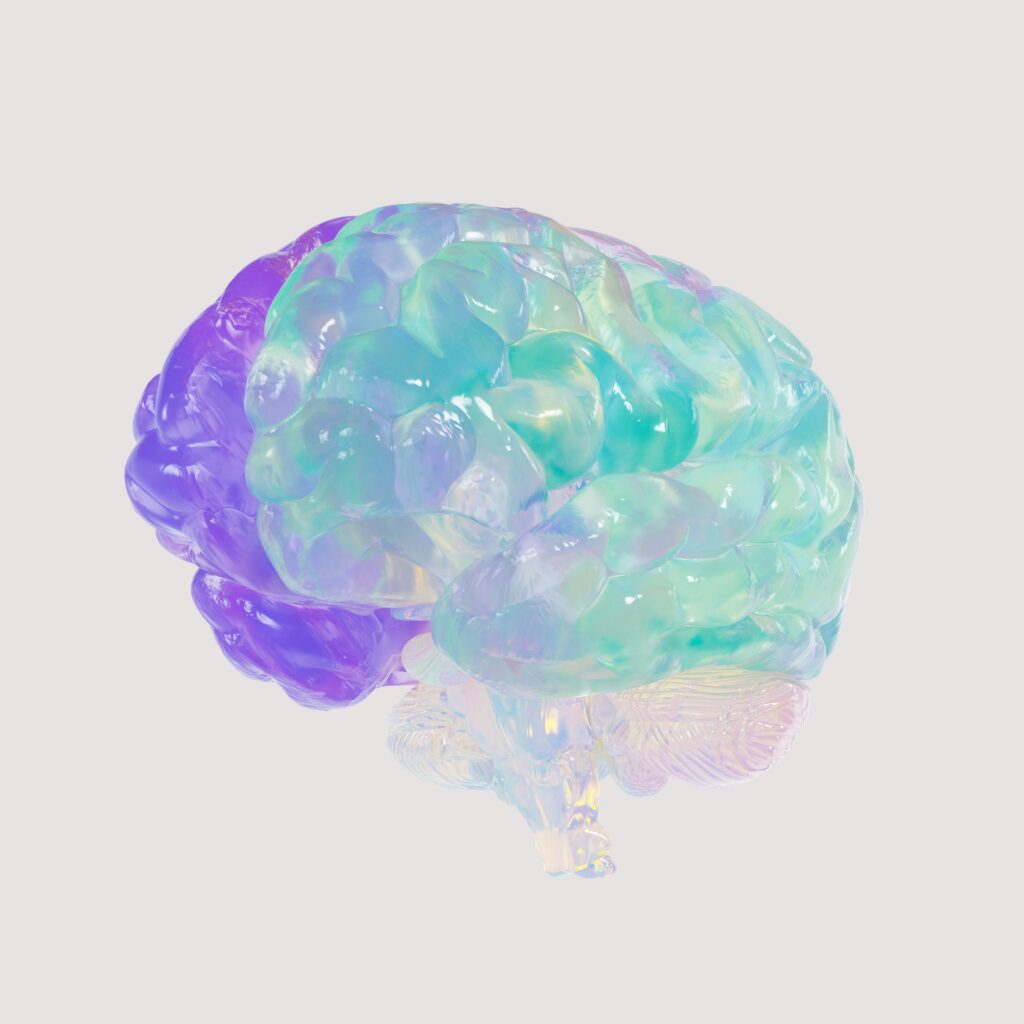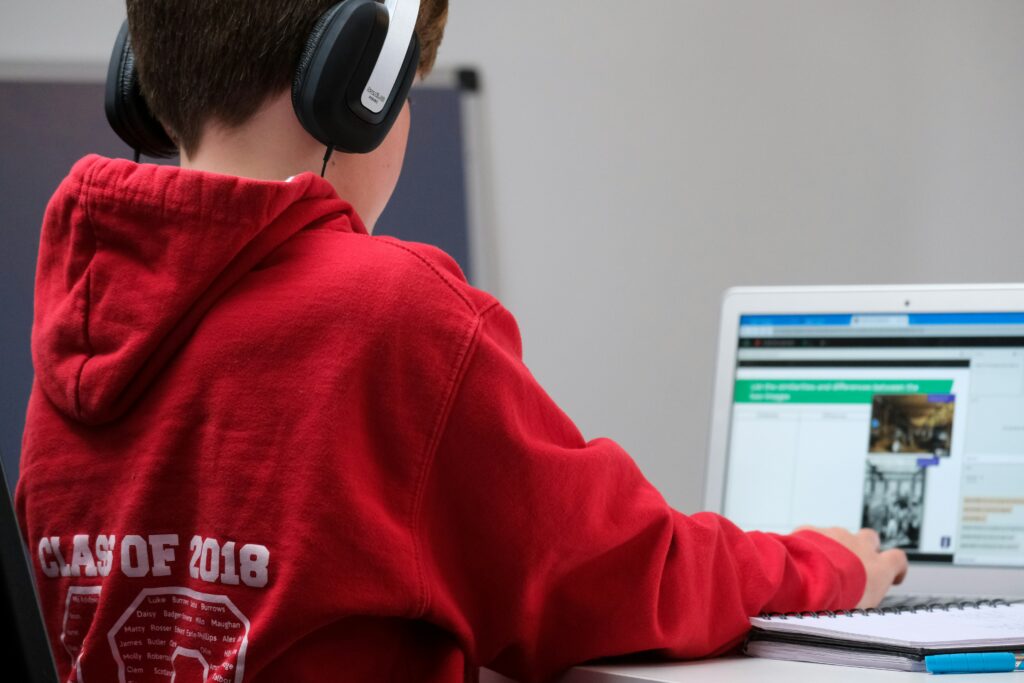Feature photo by Dragos Gontariu on Unsplash
Learning Designs
Universal learning design is a framework for education that aims to provide flexible learning environments for all students. It is an approach that avoids the ‘one size fits all’ dynamic in order to help all learners succeed.

This framework can help us design with learner variability in mind because it reminds us that not everyone learns the same way. Some people may have challenges that impact their ability to learn, so when we can include various accommodations and resources, it helps those who need it, and it can benefit other students as well.
The core principles of the UDL (engagement, representation, and action & expression) can directly reduce barriers to learning. For example, providing lecture recordings with captions on them can support students with hearing difficulties or attention challenges, but it can also be used as a tool by other students who want to review the material.
By trying to anticipate possible barriers before the students have to ask for them, we can aim to create a positive learning environment where students are automatically given a chance to succeed.
Inclusive learning design ties into the universal learning design. The goal of this framework is to encourage practice that supports the unique differences within students and create the conditions for a diverse global learning community.

This picture from an article by Watkins and colleagues (2020), shows how it is common for learning designs to be built in a way that accommodates a lot of the students, but there are still about 20% who cannot access the learning. This displays how important it is to start our learning designs with the outliers in mind as well.
Some steps that educators can take to incorporate an inclusive learning design in their classrooms include:
- Provide students with choices
- Use diverse course content (variety of cultures and perspectives)
- Promote inclusion in the classroom
- Design with accessibility in mind
Learning Disorders
It is a common fact that not everyone learns, behaves, and thinks in the same way, and that everyone is different. Yet, in schools, sometimes the teaching methods are more ‘one-size-fits-all’, and they don’t take into account the learner’s individual differences. The differences in how people learn can be thought of as a sort of spectrum, but it is also important to acknowledge that some people are genetically different in the way they think and learn.
Neurodevelopmental disorders encompass various disorders that disrupt normal brain development in early childhood, affecting functions like learning, memory, social skills, and behaviour.
Examples:
- Dyslexia: Reading Difficulty
- Dyscalculia: Trouble understanding numbers
- Dysgraphia: Difficulties with spelling, writing and grammar
- Dyspraxia: Affects physical coordination
- Intellectual disorders: Affects cognitive, social, and practical skills
Key impact: These disorders can disrupt the brain’s ability to form connections, leading to different challenges in school when the tools and strategies are not provided to accommodate their needs.
Neurodivergent disorders occur when an individual’s brain functions in a way that is not typical, which is not necessarily a negative thing or a deficit of functioning.
Examples:
- Autism Spectrum Disorder: Differences in social communication, interaction, processing, and behaviour
- Attention-deficit/hyperactivity Disorder: Symptoms of inattention, impulsivity, hyperactivity, and emotional dysregulation
Key impact: The individual has differences in the way that they interact, learn, and behave that may be considered ‘atypical’. This can lead to challenges in school and social relationships when these individuals are not provided with the support they need.

When schools or learning designs do not take into account, and accommodate the differences in how some people’s brains work, it can have a very negative impact on these individuals self-esteem, academic achievement, and overall wellbeing. It is important to remember that even though some individuals are different, and perhaps not ‘typical” that does not mean that they have any less of a right to a good education, and the support that they need. Furthermore, someone does not have to have a disorder to be considered someone who learns differently, we are all different and have various strengths and weaknesses. Neurodevelopmental and neurodivergent disorders are just good examples for the sake of this topic.
These inclusive learning designs are a great aspect of incorporating the right tools and strategies for different learners into education, but there is always more that can be done. I think that one really important aspect is for all educators to have a thorough understanding of learning disorders, and for them to make a point to accommodate them, while not contributing to stigma.
This video by Edutopia (2017), shows an example of a school where they have a sensory room where kids can go and engage in various behaviours that they need to, in order to be able to learn better and focus at other times. This is just one example of how neurodivergent kids can be incorporated into learning designs, and there are so many different ways that this can be done depending on the students’ needs.
If anyone is looking for more information about this topic, and how we can make our classrooms more inclusive to these individuals, Aide Canada has a great presentation, “An Introduction to Neuroinclusive Classrooms“.
Synchronous and Asynchronous Learning
Synchronous learning takes place when students engage with course material at the same time, usually in a traditional classroom setting or through scheduled online meetings. In contrast, asynchronous learning allows students to access and engage with course materials at their own pace and on their own schedule.
Both methods offer unique benefits. Synchronous classes support real-time interaction between students and instructors, allowing for immediate feedback, questions, and group discussions. Asynchronous learning, on the other hand, provides flexibility, which connects back to the “multiple means” principle from the UDL, and enables students to study when it best suits them and to spend more time on challenging material.
In my experience, combining both approaches works well. Currently, I am enrolled in several synchronous, in-person classes as well as this asynchronous online course. Managing five synchronous classes at once can be overwhelming, but having an asynchronous option lets me schedule work at times when I am most focused, helping me succeed in all of my courses.
This video by Brennan, Z. (2022), goes into detail on the differences between synchronous and asynchronous learning and discusses the blended technique where both are combined. For example, a blended approach could have a specific synchronous lecture time where everyone learns the same concept, and then they have an asynchronous assignment where they reflect and build upon what they have learned.
Combining synchronous and asynchronous approaches can support inclusion because each method accommodates different learning preferences and personal circumstances. Some students thrive on the structure and social connection of real-time classes, while others benefit from the flexibility to engage with materials at their own pace. When both formats are used together, students have multiple pathways to participate and succeed. This reinforces the idea that learning should be adaptable to individual needs rather than following a “one-size-fits-all” approach.
Online Education
Sometimes, when it comes to online learning, more steps need to be taken to ensure the students are able to actively engage with the material they are learning.

Tips for effective online learning:
- Accessibility
- Flexibility
- Collaboration
- Personalized learning
- Access to resources
- Feedback
- Questions
All of these aspects can be integrated into online learning modules to ensure that the students are able to understand, analyze, and learn the material. Frameworks like Universal Design for Learning (UDL), support these aspects by promoting alignment between learning goals, assessments, and activities; ensuring clarity through organization and communication; and improving accessibility by offering multiple means of engagement, representation, and expression.

Different types of interactions between the students, content, and instructors are important for learning because they can promote deeper understanding, active participation, and connection.
| Type of interaction | How to encourage it | Why it’s important |
| Student-Content | – Alignment: Connect learning activities to student goals. – Reflection: ask students to complete reflections to increase engagement with the material. – Use multimedia: videos, readings, quizzes. | Encourages active learning and deeper understandings of the content, by allowing them to connect with the information through various ways, supporting different individuals. |
| Student-Student | – Groups: Collaborative tools and group work. – Peer-review: Allows for feedback opportunities and further engagement. – Discussions: Discussion boards, or group projects. | Builds a sense of positive community and belonging, increases motivation, and promotes inclusivity and different perspectives. |
| Student-Instructor | – Availability: Make office hours, respond to emails, discussion Q&A boards. – Feedback: Provide timely, meaningful, and useful feedback. – Ongoing communication: Regular announcements, reminders, let students know you are also actively engaged. | Creates social presence, supports emotional connection and guidance, and helps students feel seen and supported in the online space. |
Putting It All Together
To summarize, creating inclusive and engaging learning environments means recognizing that students have diverse abilities, experiences, and needs. Frameworks like Universal Design for Learning and inclusive design help us to plan for diversity from the start by offering flexibility, choice, and multiple ways to engage. Whether through synchronous discussions, asynchronous activities, or a blend of both, thoughtful design ensures that every learner has meaningful opportunities to participate and succeed. Writing this post made me realize that inclusion is not one single strategy, it is a mindset that can shape how we teach, design, and connect with learners. Ultimately, an inclusive education is not about treating everyone the same, it is about giving everyone the support they need to thrive.
Resources
Aide Canada, Sinneave Family Foundation. (2025). An Introduction to Neuroinclusive Classrooms. https://aidecanada.ca/resources/learn/asd-id-core-knowledge/an-introduction-to-neuroinclusive-classrooms?gad_source=2&gad_campaignid=22123530151&gclid=Cj0KCQjwl5jHBhDHARIsAB0Yqjx3Qq2_rdj2Ic7k1GJrrlnzhE3P4TmMXVctakwZyoshfnUYFkHbj40aAu6WEALw_wcB
Brennan, Z. (2022). Synchronous and Asynchronous Learning. Purdue University. https://www.youtube.com/watch?v=vT_gxhJ4lJo
Edutopia. (2017). The Sensory Room: Helping Students With Autism Focus and Learn. https://www.edutopia.org/video/sensory-room-helping-students-autism-focus-and-learn
Interaction and Engagement – Purdue Fort Wayne. (n.d.). PFW.edu. https://www.pfw.edu/offices/enhancement-learning-teaching/pedagogical-resources/interaction
Stapleton-Corcoran, E. (2022), Universal Design for Learning (UDL). Center for the Advancement of Teaching Excellence, University of Illinois Chicago. https://teaching.uic.edu/cate-teaching-guides/inclusive-equity-minded-teaching-practices/universal-design-for-learning-udl/
Watkins, C., Treviranus, J., & Roberts, V. (2020). SNOW Inclusive Learning and Education. Inclusive Design for Learning: Creating Flexible and Adaptable Content with Learners. https://snow.idrc.ocadu.ca/articles/inclusive-design-for-learning-creating-flexible-and-adaptable-content-with-learners/
